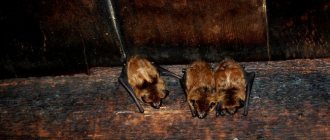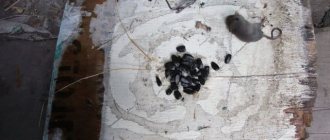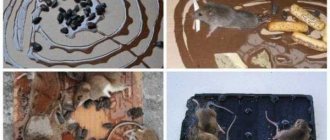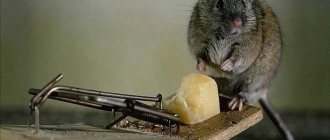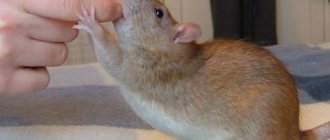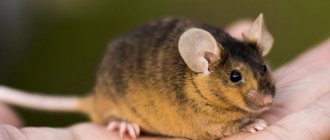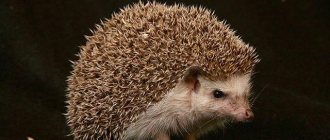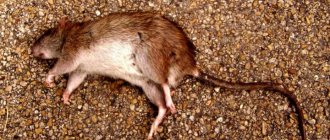Home Bats How do bats live and where do they live in winter?
One of the most interesting and mysterious living creatures, the true nature of which does not at all correlate with the mythical ominous rumors and ideas of our “dark” ancestors. In fact, bats are more beneficial than other members of the human race.
And we will try to talk about these amazing nocturnal animals, or more precisely, about how they live, where they spend the cold winter and when bats wake up after hibernation.
- Who are they, creatures of evil or faithful helpers?
- Hibernation of bats
- Take care of our little brothers
- Conclusion
Do they all spend the winter where they live?
Not all types of flying animals spend the winter where they spend the summer months. Some varieties fly to warmer places, just like birds. But many species of these animals remain to spend the winter where they live.
Among the mice remaining for the winter, the following species are most common:
- nocturnal;
- earflaps;
- nightlights.
Animals of these species find suitable secluded places and fall into long suspended animation, lasting up to six months. However, if a person manages to find a place where a bat hibernates and accidentally or intentionally disturbs the animal, then the animals, despite the cold weather, fly away in search of a new shelter. Such forced migrations significantly harm the health of animals and can cause the fact that with the onset of warmer weather, some animals will not wake up, that is, they will die.
Who are they, creatures of evil or faithful helpers?
Bats (lat. Microchiroptera) belong to the order Chiroptera of the cohort of placental mammals. These are the only animals in the world capable of prolonged flight.
This is a very extensive order in terms of species, and the sizes of its representatives range from 3 to 50 cm in length, and from 5 to 80 cm in wingspan. But we will consider as a sample not large tropical specimens, but small species inhabiting our European regions, the dimensions of which usually do not exceed the size of a sparrow or tit.
These flyers can live 5-10 years and even longer. Zoologists claim that some bats under scientific supervision lived up to 20-25 years, and this is by no means fiction.
Bats cannot be confused with any other living creature on planet Earth. They have a unique appearance that most may find repulsive and sinister.
The thin limbs of bats resemble a bone frame on which a leather membrane is stretched, forming wings. These creatures have very thick fluffy fur on the body, usually lighter in the front.
The head and muzzle have a truly bizarre structure, with which, in addition to the wings, all the fables about the otherworldly nature of these creatures in the old days were usually associated. And in some ways we can understand both our ancestors and modern, more mannered representatives of the fair sex, who are frightened by just the sight of these funny creatures on TV screens.
The muzzle resembles a pig's snout with large ears, like that devil from the well-known Soviet film adaptation of “Evenings on a Farm near Dikanka” performed by G. Millyar. And two fangs protruding from the upper jaw can cause even greater fear and mistrust.
It must be said that, despite very poor eyesight, these creatures are quite nimble and perfectly oriented in space during flight. In this they are helped by echolocation, that is, the ability to catch the reflection of ultrasonic pulses from surrounding objects.
These animals feed mainly on insects, which they catch in flight with extraordinary dexterity. Tropical bats also eat fruit, and among them are vampire bloodsuckers. However, let's return to our insectivorous night flyers.
Bats are more useful animals for humans. Harm on their part may only consist of the transmission of some dangerous diseases, but this, again, applies to a greater extent to tropical species.
The same species that live in our latitudes perform an important function in the fight against many insect pests and parasites among them. These night hunters are a real scourge for mosquitoes, flies, moths and other not very useful insects, sometimes poisoning the summer season for both the average city dweller and the ordinary villager.
The benefits of bats are especially appreciated in rural areas, where overnight a flock of these creatures can greatly help a farmer who is always suffering from harmful insects.
Also, these creepy-faced flyers serve as plant pollinators, carrying plant pollen on themselves and distributing it over a wide area.
In what month do bats hibernate? When should you start feeding?
There is practically no point in feeding the animal once. The animal needs long-term feeding if its reserves of subcutaneous fat are running low. You can find out only by weighing the animal on a scale. If you do not have scales, contact your nearest veterinary clinic and ask them to weigh your animal. If you do not have the opportunity to feed the animal, or its weight is within the normal range, then you should place the animal in the cold for the winter as soon as possible (which will be written about later). In the warmth, the bat burns its fat reserves, which will help it survive the winter, and will soon die.
In bats with short fur, such as rufous noctules, the degree of fatness can also be determined visually. In the photo on the left is an exhausted bat that requires additional feeding, while on the right is a well-fed one that can continue wintering without any problems. Please note: in an emaciated animal, the depression at the withers, between the shoulder blades, and also the sunken belly are clearly visible. A well-fed animal does not have such depressions - there is a fat reserve at the withers and between the shoulder blades, and the tummy is moderately rounded.
But most native bat species have long fur that hides their body shapes. In this case, you can determine the degree of fatness of the mouse by touch. The presence or absence of fat at the withers and in the area of the shoulder blades can be very clearly felt.
In our practice, we start feeding animals when their weight is below the norm we have established. So, for the rufous noctule it is 27 grams, for the late-colored noctule – 25 grams, for the Kul’s pipistrelle – 7 grams, and the two-colored noctule – 13 grams. Look
If you do not know what species the bat you found belongs to, please send us a photo of the animal by e-mail, VKontakte or Facebook page, and we will help you determine the species. You can also contact us by phone numbers listed on the website.
Description and features
Living under the cover of night, the habit of hiding in secret corners during the day and sleeping hanging upside down, as well as other oddities in the behavior of these animals, have caused many myths and superstitions to arise around their persons.
In the past, they were considered vampires, and the inhabitants of past centuries were sure that they, as befits creatures of this kind, feed on the blood of people and other living organisms. And such speculations were not invented without reason.
Undoubtedly, these are very unusual creatures of nature, and their features, without exaggeration, are unique. These creatures were called bats for their small size and the sounds they made, similar to a squeak.
However, they were given all sorts of nicknames. For example, in Rus' they were called eared ears, bats, bats and much more.
Bats move by echolocation
The bat is an animal that is not related to rodents and is classified by zoologists as belonging to the order Chiroptera. The uniqueness of these representatives of the earth's fauna, which also includes fruit bats, lies in the fact that they are the only mammals capable of moving through the air, since they have wings.
Amateurs believe that only birds can have such a useful decoration. But this is a big mistake, because it turns out that even animals can soar in the sky. And the bat is a clear confirmation of this.
But it should be noted that the wings of mammals are not at all similar to similar parts of the body of birds. In a bat, these are just wide membranes that connect the limbs of the animal, being stretched between them, that is, between the arms and their incredibly long fingers in front, as well as the legs and tail in the back.
Such wings, which make up a significant portion of the size of the entire animal, can have a span of almost a meter. But this is only for large specimens, because it is possible to give examples of representatives of this tribe the size of an insect.
It is also curious that the wings of such animals are used not only for their intended purpose. They also play the role of a kind of cloak in which these creatures wrap themselves, maintaining their warmth in bad weather.
The head of flying animals is small and round in shape. Their body is covered with dull, dark gray or brownish, in some cases other shades, fur. It can be different: thick and shaggy or short, even and sparse.
These animals practically exist in flight, so their limbs are bizarrely modified and underdeveloped, but end in strong claws. The furry tail helps bats perform complex maneuvers in flight.
The vision of such creatures is weak, and they do not feel any particular need for it, because the animals spend most of their lives in the dark. But the ears are of considerable size, and these organs perfectly capture a wide variety of, even completely indistinguishable noises.
Where can you find them?
To find a place where a bat hibernates, you need to know what conditions the animal requires for hibernation. Not every attic in a residential building or a cave in the forest is characterized by the qualities necessary for long-term suspended animation. The location must meet certain parameters.
Where the bat hibernates, fairly strict conditions must be met:
- temperature not higher than 8 degrees Celsius, but not lower than 7;
- humidity - from 80%;
- no drafts.
The requirements are quite complex, especially for urban areas. For this reason, it is not at all difficult to find a place where bats hibernate in the city. It is enough just to exclude all those places in which the animals will not be comfortable
What does it eat?
What are the food preferences of a rodent, since it chews literally everything that comes its way? He is capable of even such addictions that are difficult to even imagine. They chew holes in wooden, concrete or brick structures. Their diet includes products made from polystyrene foam, plastic or rubber, as well as products from other synthetic materials. In a human home, the vole mouse spoils any food products, but does not disdain grain, bulk food products, vegetables, fruits, etc. meat, lard, sausage, etc.
Interesting to know! The vole mouse stores for the winter if it is in the field, and during the winter it eats everything that it managed to collect during the warm period. As for other representatives of this family that were able to gain access to human reserves, they do not care about supplies for the winter. The rodent stores for itself for the winter food items that are edible. In this case, the amount of reserves depends on the size of the mink. During the day, the mouse eats no more than 5 g of food and drinks up to 20 ml of liquid. Instead of water, rodents consume succulent parts of plants. Around mid-summer, the animal begins to make supplies for the winter.
What's best for them to sleep in?
Mice that stay for the winter in the climatic conditions of the middle zone prefer to do this in the following places:
- abandoned adits and mines;
- insulated attics of non-residential old houses and basements;
- deep and dry wells;
- large hollows;
- branched grottoes or caves.
Mice can spend the winter in any other suitable places. For example, among the shelters where bats spend the winter in Russia, one of the first positions is occupied by abandoned pipelines and buildings. Large pipes under rural bridges, in which streams or rivers used to flow, can also become a haven for animals. True, only in the southern regions of the country. They also make their winter quarters in the ruins of churches, estates and other ancient buildings.
“City” residents or how mice winter in cities
Human occupation of most areas of their natural habitat is forcing bats to adapt to urban conditions. For winter hibernation, animals choose seams and cracks of high-rise buildings, attics, balcony trims, basements, vegetable and grain storage, air conditioner boxes, and the space between window frames.
The proximity of people is extremely unfavorable for bats . There is a very high probability that a person will discover animals and disturb their sleep. When looking for a new home, many mice die from the cold or the paws of cats and dogs.
A person can do a good deed . Having found a winged creature in winter, help it survive: give it water and find a place to hibernate. For example, place it in a box or bag in your own refrigerator. Some people leave the mouse awake, but then it needs to be provided with the necessary nutrition: insects, mealworms, etc. In spring, the guest must be returned to the natural environment.
If you find a colony of bats in a building, you don’t have to worry about the state of the environment around you. Mice are a kind of “barometer”; they do not live in places of chemical pollution. But large colonies of animals, of course, also create certain inconveniences for city residents. To get rid of numerous tenants, you can use an ultrasonic repeller. If a family of mice has managed to settle down for the winter, then it is better not to disturb the animals. You can endure one winter so that the animals do not die. And next year try to prevent unwanted proximity.
What are the optimal conditions for wintering?
So, if the animal has gained the required weight, then one day after the last feeding it should be placed in a cool place (15 ºС) and then placed in the refrigerator another day later. The optimal temperature for hibernation of bats is 2 – 8 ºС. In apartment conditions, you can place the animal on the balcony or in the refrigerator.
Important factors for successful wintering are stable temperature and high humidity (more than 50%). On the balcony, the temperature often fluctuates, so the refrigerator (compartment for vegetables) is more suitable for bats. Chiropterans do not have an unpleasant odor and will not be interested in your products, so you do not have to be afraid to place the animal in the refrigerator.
If you have a refrigerator with a “no frost” system, then to maintain the humidity the animal needs, you can place a bowl of water next to the box in which it sleeps. Frequent opening of the refrigerator, light and noise will not affect his sleep. Let's repeat the main thing: cold and humidity. If you have a cellar or garage with suitable temperature conditions, then this is also a good option.
If the animal has been fattening for some time, it is better to place it for the winter in the same bag or box in which it lived warmly.
You should not check how the animal sleeps too often, since each awakening is a loss of energy. About once every 3-4 weeks, the animal can be taken out of the refrigerator (or other wintering place), given water, weighed and sent back. If the weight has dropped significantly again, start a new feeding cycle.
We suggest you read: What to do if your cat has frostbitten ears
This should be a shelter with a temperature of 0 8C and a humidity level of 80-100%, without drafts. For the middle zone, such conditions are usually met by dungeons, basements, caves, old mines and adits, deep well log houses, attics, and hollows in trees. Sometimes accumulations of wintering individuals reach several hundred heads. Numerous colonies can settle in old abandoned military pillboxes, many of them in the forts of the Brest fortresses.
If wintering is successful, then the animals remember this place and will definitely return for the next hibernation, because it is becoming more and more difficult for winged animals to find suitable shelters in modern realities.
The place where the bat hibernates is permanent. These animals have a specific memory, and as soon as they find a place that best meets the conditions necessary for wintering, they return to it for years.
How long do they sleep?
The very concept of “wintering” is relative when it comes to bats. The animals sleep for 5 to 6 months, but can remain in suspended animation for longer. In fact, these animals migrate to their wintering place as soon as the night temperature drops below 12 degrees and remains at this level for some time.
The place where the bat hibernates is permanent. These animals have a specific memory, and as soon as they find a place that best meets the conditions necessary for wintering, they return to it for years.
Field mouse: description
A small rodent can be called differently: field mouse, meadow mouse, simply vole, small mouse, striped mouse. This animal is familiar to many people, since the lives of humans and rodents are often intertwined. With the onset of real winter cold, this pest moves closer to humans, appearing in barns, warehouses, sheds and other outbuildings, as well as in human homes. They often settle in dachas, gardens or personal plots.
It is not difficult to distinguish a field mouse from other rodents by a number of characteristic features. For example:
- It grows in length up to 12 cm, no more, while the average size of a rodent is about 10 cm. The tail of the animal is thin and makes up about 70% of the length of its body.
- The body shape is somewhat oblong with elongated hind feet. When the mouse moves, they protrude forward.
- The muzzle is elongated, with an oblong nose, and the ears are small but round.
Judging by its appearance, it is an attractive and harmless animal. Of particular interest is the mouse's red nose. The body structure of a mouse differs little from the body structure of many species of rodents.
The body is covered with short hair, which is characterized by uneven coloring, while the abdomen is always lighter compared to the rest of the body. The vole can be easily distinguished from other species of rodents by the characteristic black stripe located along the back. The color of the coat may vary depending on living conditions. In summer, the vole has a darker color, but with the arrival of winter, the color changes to lighter. In the images below you can see for yourself how the vole mouse differs from other rodents.
Interesting fact! Rodent teeth are unique in that they grow throughout life. This is especially true for a pair of long incisors, which appear already in the second month of life and grow by 1.5 mm daily. To prevent its teeth from growing excessively, the animal needs to constantly gnaw on something so that they wear down. At the same time, mice gnaw even those objects that have no nutritional value.
The average weight of a vole mouse is no more than 20 grams, although larger individuals are found, weighing up to 30 grams.
How bats fly. Bat
A bat is a mammal that belongs to the placental mammals, a species of chiroptera, and is rightfully considered the most mysterious animal. On the one hand, the bat is the only mammal that can move through the air; Based on this ability, they claimed that it was a bird. But, on the other hand, they are viviparous; they feed their young with milk, which birds do not do.
The nocturnal lifestyle of these animals and their frightening appearance have created many legends around them, and some are absolutely convinced that the small animals sleeping in secluded places upside down are real vampires who hunt people and animals to drink their blood. Not everything in these legends is fiction.
Origin of the name bat
The name “bat” itself appeared in Russian only at the beginning of the 17th century, thanks to the translation of a German book. This literary variant caught on, and this is how the animals of the order Chiroptera began to be called.
In Russia, other names were also found: pipistrelle, kozhan, noctule, nocturnal bat, horseshoe bat, long eared bat, arrow-eared bat, tubebill and others. All reflect the external characteristics of these mammals or the features of their way of life.
The same thing is observed in the modern name. Animals that have no family connection with the order of rodents closely resemble them in appearance. And the sound of a bat is similar to the squeak of rodents, and the ability to fly adds a definition that has become the name of the order Chiroptera.
What do bats look like?
It is believed that every fourth mammal on earth belongs to the order Chiroptera. Despite the species differences, they all have common external features.
Wings
The main distinguishing feature of these animals is their wings. It was precisely because of its presence that the debate continued for a long time: a bat is still a bird or an animal.
The wings are thin membranes that are stretched between the fore and hind limbs. Unlike birds, bats do not have feathers, and membranes are attached to the very long fingers of the forelimbs.
The wingspan, depending on the type, can vary from 16 cm to 1.5 m. Despite their apparent fragility, they are able to withstand significant loads and reach flight speeds of up to 20 km/h.
Flight is not the only purpose of wings. During sleep, bats wrap themselves in them, and thus retain their warmth.
Bat Skeleton
The animals' body is relatively small: the spine is much shorter than the modified forelimbs with five fingers with sharp claws. The animal does not have strong limbs, the humerus are shortened, so its movement on the ground is minimal, the main thing for them is flight.
The skull is round in shape with a shortened anterior part in some species and an elongated one in others. If you look at bats, the body is practically invisible. They appear to consist of a head and wings.
Animals have a tail that is not covered with hair. For most, it serves as a device for maneuvers during flight.
Ears
Ears play an important role in the life of an animal that does not have acute vision. In almost all species they are of enormous size.
Numerous networks of blood vessels nourish the ears, since their participation in the life of bats provides them with the ability to move and hunt.
Animals make subtle sounds that bounce off objects and return. This method of orientation in the world is called echolocation. The ability to quickly catch even the quietest sounds helps bats fly at night and hear the movement of potential prey.
Disturbances in the functioning of the hearing organs most often lead to the death of the animal.
Eyes
Chiropterans are nocturnal, which in the process of evolution also affected their vision. In almost all species, small eyes are located in the front part of the muzzle.
The animals of this detachment see everything in black and white. Since the bat sleeps in shelters during the day, its eyes react very poorly to sunlight.
But these animals also have their exceptions. Thus, the California leaf-nosed bat sometimes relies more on sight than hearing when hunting.
If a bat lives as a pet, then you have noticed that it rarely flies into a room in which the light is on, and to catch it, it is enough to turn on the light bulb, and the animal immediately stops flying.
Teeth
Absolutely all chiropterans have teeth: in the jaw you can see incisors, molars and premolars, and fangs. But their number, size and structure depend solely on what bats eat in their natural environment.
Those bats whose diet consists of insects have up to 38 teeth, and the length of their fangs can also vary. Blood-sucking mice typically have a jaw of 20 teeth, and they are not as large or developed as those of their insectivorous counterparts.
The shape of the teeth is adapted to what bats eat in the wild. So, in insectivorous animals, the teeth resemble mortars that grind rough food. But only those who feed on blood have long fangs.
What happens during hibernation?
In this state, all life processes occurring in the animal’s body are suspended. During active wakefulness, the heart rhythm in these animals averages 420 beats per minute. In a state of suspended animation, the pulse decreases significantly. The rhythm during winter sleep does not exceed 14-16 beats per minute.
Such characteristics as body temperature also change. If you pick up the mouse, it will seem hot and dry. During wakefulness, during the active life period, the body temperature of these animals remains at the level of 37-40 degrees. As soon as the animal falls asleep for a long time, that is, for the entire duration of the upcoming cold weather, the temperature level changes. Moreover, these changes are quite large. The body temperature of a bat in suspended animation is close to zero degrees. To the touch the animal seems not only cold, but also numb.
Hibernation is an important component of the life cycle for these animals. The longer the state of suspended animation lasts, the longer the mouse will live. Stable “entry” into suspended animation and the absence of forced awakenings from hibernation increase the life span for these animals up to 15-20 years.
Bats of Saratov. A bat bit a Saratov woman on the hand and died
© vsezhivoe.ru
In the Saratov region, a woman was bitten by a bat. According to the regional veterinary department, this happened at the end of March. The animal flew into the apartment of the house. He was caught, kept at home, and fed by hand. During the next feeding, the bat bit the woman on the palm and died a few days later. The injured woman went to the veterinary hospital. Laboratory tests are now being carried out, doctors are checking the animal for rabies and continue to monitor the condition of the city dweller.
The department notes that in order not to become infected with the deadly virus, city residents should avoid contact with any other people’s animals, especially wild ones. You cannot pick them up, pet them, feed them, bring them home, or try to treat them. Since the rabies virus is transmitted by a bite or salivation, if an animal attacks you, you must immediately consult a doctor. Pets should also be vaccinated against a dangerous infection. In public hospitals this can be done free of charge.
According to veterinarians, compared to last year, the level of rabies in the region has decreased by almost 7 times. Since the beginning of the year, veterinarians have vaccinated 516 thousand domestic and farm animals. They also, together with specialists from the regional hunting and fishing committee, distributed 600 thousand doses of vaccine in natural areas to immunize wild animals. Several foxes were killed as they are the main carrier of the virus. Since January 2022, specialists have eliminated 21 outbreaks of infection.
Let us recall that in early April, specialists from the Central Scientific and Methodological Veterinary Laboratory included the Saratov region among the regions where cases of rabies are reported. Later, veterinarians provided this information.
23 comments
Now I’m starting to get hysterical from the titles of articles on websites: on one I read, “In Saratov, a man killed his COMMUNIONmate,” as if they were in a civil marriage, and now also about a bat in pursuit that died in Saratov because it bit a citizen already in March!!!! You have to come up with headlines like that, where did they learn this!!!???? And on the topic, a saying came to mind: “Spit on my knee, maybe it will make me feel better!?”
Can you provide statistics, at least for the region - how many bats have bitten people, this is the first!!! and the second - how many of them attacked people for various reasons??? I'm sure —- NNNOOOOOL!!! all the reasons are in the carelessness of people and nothing more. and in general, how can an animal have a human disease if our diseases and medicines are fatal to them??? AAAA?
I read the comments and am overwhelmed with horror: what are you mocking?! You can’t wish for evil, but you just want to say: if this happens to you, then you’ll scream to God and look for those to blame. This topic is not funny, God forbid that the mouse was not really rabid and died only from improper care...
Well, I wrote the question with the answer - animals cannot tolerate human diseases and medicines, and therefore they are fatal to them! and people don’t get sick from animal diseases—everyone has known this for a long time!!! where did you get the idea that it’s the other way around!!! and to be a carrier you need to have immunity to one or another infection! understand this!!! This news is probably fake!
But as for poisons, that’s a different matter! most likely the mice were poisoned, and she carried poison on herself, only mice, like rats, have the ability to adapt to poisons very quickly than humans. most likely that's what happened
A resident of the region replied April 10, 2022, 20:10
Have you ever seen animals with rabies in nature? Which came to the residents' yards? People become infected from animals, and not vice versa. Or we didn't understand each other
Furiously baptized April 11, 2022, 08:47
The mouse was 100% rabid, otherwise it, with its bestial instincts and aura of a fiend of hell, could have realized that it should not fly into an apartment where it would “give a damn” from its own machinations.
When to release?
If the bat survives until spring, then with the onset of the first consistently warm nights (at air temperatures above zero), the animal can be released. Usually this is the end of March - beginning of April. Also at this time, the first insects appear, and the animal will have something to eat. It should be released after sunset in a park area or outside the city, planted on a hand or on a tree trunk. First give the animal some water and, if there is food left, feed it.
If the bat did not survive until spring, but died during the winter, be sure to give us the frozen corpse. Cadaveric material is necessary for studying the anatomy, physiology and infections of chiropterans.
Chiropterans are the least studied mammals in Ukraine and Russia, so we will be glad to send you letters and photographs about the animals found (date, country, locality, location and features of the find).
Nutrition
The structure of the teeth in each of the representatives of this suborder is different and directly depends on the feeding method of a particular species. Blood-sucking species have few teeth, only 20 pieces, but they are famous for their long fangs. Other bats have 38 of them.
However, their teeth are blunter and serve more likely to grind rough food that enters the mouth. Some blood-sucking species are able to cause significant harm to their victims, because the enzymes that enter the victim’s blood along with the saliva of attacking animals during a bite can provoke significant blood loss.
And if the attack is carried out by a whole group, for example, ordinary vampires, a fatal outcome is more than likely.
As already mentioned, night for such creatures is the time of hunting, and their active life begins with the last ray of the setting sun. These flying mammals do not see their victims, but hear them, catching their slightest movement.
Insectivorous species, in addition to winged little things and crawling insects, are capable of eating earthworms, small fish, and frogs. There are also enough species that eat exclusively fruits and drink flower nectar.
Features of behavior
Voles are quite active living creatures, as their metabolic process is quite fast. They need to eat quite often, as they use up their energy quite quickly. Mice have a hard time withstanding hunger, and even more so lack of water. Without food and water, a vole mouse can live no more than 1 week.
Despite such facts, the vole mouse adapts quite quickly to new conditions. Rodents move in certain ways, and they mark their territory with urine. They show their main activity when it gets dark. Under certain conditions, rodents become more active during the day.
Mice are quite cautious living creatures. They react to the slightest sound or rustle, quickly running away to their shelter. This indicates that rodents have many natural enemies and danger lurks at every turn.
The pest tries to constantly stay as close to its hole as possible, moving away from it only a few meters. As a rule, rodents move in tall grass, under bushes or in the shade. Each individual has its own territory marked. They prefer to live in flocks, controlled by dominant males and females.
Interesting to know! The lifespan of individuals in natural conditions is no more than 1 year, although scientists believe that mice can live up to 7 years. The thing is that mice have many natural enemies. In artificial conditions, the average age of rodents is about 3 years.
Flying animals
Bats are the name given to mammals that belong to the order Chiroptera, whose representatives can fly. At the same time, the flight of a bat is so specific that it is impossible to confuse its movement with the flight of other representatives of the animal world: with their thin and large wings resembling parachutes, they seem to constantly push off from air masses (the name of this type of movement is “propulsion”).
The order Chiroptera includes 1,200 species (forty of them live in Russia) and includes two suborders: one family – fruit bats, seventeen – bats. Their numbers are so large that they account for 20% of the total number of all species of mammals on the planet.
Koalas are the original representatives of the living world of Australia 69434.751
Bats live on all continents of the globe except Antarctica. You also won’t see them in the tundra and subpolar regions. Most species prefer to live in the tropics, although representatives of the order can also be found in the middle zone. For example, if in temperate latitudes the population density of animals ranges from 50 to 100 per km2, in Central Asia these figures reach thousands. On many islands in the ocean, bats are the only land mammals, since only they can easily overcome long distances over the sea.
Trampling and redistributing snow
In order for rodents to get close to such tasty plants - bulbs planted in flower beds and garden beds, bushes and trees - they must make their way through the snow and freely dig a hole or passage. The simplest measure available in winter - trampling down snow - creates a barrier for rodents that is sufficient for effective protection.
They trample down the snow, moving from the perimeter of the tree trunk circles to the trunk, in flower beds - between the plants, trying not to touch them.
Snow is always distributed so that the most vulnerable plants are securely covered, and bare soil is protected from weathering and freezing. In addition, you need to add snow so that in the spring it effectively moistens the soil.
By finishing each snow distribution by compacting it near rodent-attracting plants, you reduce the risk of rodent problems.
Take care of our little brothers
It should be said that the period of hibernation, especially in urban conditions, is the most dangerous and risky period in the life of bats. People often find their “winter apartments” and destroy them, driving half-asleep animals out into the cold, from which they quickly die.
Numerous explorers of caves and dungeons are also guilty of such deeds, especially where they are of historical, cultural or material interest.
In general, a person, as always, harms himself.
Bat cocoon. NEW BUSINESS: 5 THOUSAND DOLLARS FOR EACH BAT NEST
- society
- readers: 1,760
Businessmen walk around the villages of Penjikent in northern Tajikistan, offering 5 thousand dollars for each bat nest found. This caused a stir among residents, who, for the sake of such profit, began searching for the nests of this rare chiropteran animal. According to local residents, these businessmen are from local Luli, who say that the bats' nests will be used to produce an anti-cancer drug. But some are expressing concern that the resulting excitement could lead to the extermination of bats in the Zarafshan Valley. On January 24, residents of Penjikent told the Akhbor website that in the villages of this region, many people were frantically searching for bat nests. This new business was invented by local Luli (Central Asian gypsies), who go around villages and invite residents to look for bat nests for them. These lulies told people that pharmaceutical companies are using the nests of these animals to produce cancer drugs and they, as middlemen, are ready to pay 5 thousand dollars for each nest found. One of the residents of the village of Dashti Kozi, in a conversation with Akhbor, said that intermediaries from the Luli came to their village on the evening of January 23, when they learned that a resident of Dashti Kozi named Kandil had found a bat nest: “When Kandil showed them the found nest, they said it was an old and broken nest and was not sealed properly. Therefore, they said, the nest Kandil found was not worth 5 thousand dollars, but nevertheless, they were ready to pay a thousand dollars for it. But Qandil refused. Then these luli explained to the residents that when they find a bat nest, they must cover it with tape and immediately inform them. We will come, take the nest and give you the money, they promised.” Luli mediators showed the residents of Penjikent in photographs what a bat's nest looks like and how they should cover their nests (see photo above). Earlier this year, conservationists in Uzbekistan raised the alarm about a similar hunting frenzy for bat nests in that country. It was reported that businessmen on the Internet have opened special auction pages where they buy bat nests for amounts ranging from 5 to 10 thousand dollars. Reports from Uzbekistan have also suggested that bat nests are needed by pharmaceutical companies to produce cancer drugs, although no credible sources have confirmed this. Anastasia Tashilova from the Living Planet organization expressed concern that such a stir could lead to the destruction of bats: “People believe in these baseless promises and destroy nests. Don't trust them. They are scammers.” Some Penjikent residents are also concerned that the rush to find bat nests will lead to the destruction of the already rare animal. An Akhbor interlocutor from the village of Dashti Kozi said that several years ago, the same ruthless hunting of local quails, known as bedona, led to a strong decrease in their number in the Zarafshan mountains. A few weeks ago, residents of Dashti Kozi witnessed a ruthless hunt for saba (sa'va, finch) - another species of rare birds inhabiting the Zarafshan Valley. “5-6 hunters from Istaravshan hunted these birds from the end of December to the beginning of January. Every day they caught up to 100 finches. When local residents expressed concern that they would destroy all the birds of this species like this, the hunters said that they had official permission to catch finches. They even showed a license signed by the head of the environmental department of the Penjikent city administration, Ashraf Gafurov,” said the village residents.
Food at different times of the year
The field mouse eats a variety of foods, the choice of which depends on the season.
| Winter | The rodent settles closer to living quarters and grain folds. It feeds on grain, straw, and root crops stored by humans. |
| Spring and summer | At this time of year, the vole rushes to the fields, where it can feed on the roots of crops. At the same time, it causes enormous damage to crop yields and farming. It also feeds on insects and plant stems. |
| Autumn | The best season for food. At this time, the harvest takes place; all the fruits in the gardens are ripe. The vole feeds on grain, seeds, and root crops. |
Where should I put the animal?
You can use cardboard box
from under shoes, a thick cotton bag
or
sock
. In the box, hang a piece of fabric on the edge, which the animal can cling to and hang upside down. If the box is cardboard, then one or two ventilation holes with a diameter of 1 cm are enough (you can punch them with a ballpoint pen). Close the lid of the box and seal it with a piece of tape. It often happens that the animal lifts the lid and climbs out. The bag or sock should be tied with an elastic band.
Source
What's best for them to sleep in?
Mice that stay for the winter in the climatic conditions of the middle zone prefer to do this in the following places:
- abandoned adits and mines;
- insulated attics of non-residential old houses and basements;
- deep and dry wells;
- large hollows;
- branched grottoes or caves.
Mice can spend the winter in any other suitable places. For example, among the shelters where bats spend the winter in Russia, one of the first positions is occupied by abandoned pipelines and buildings. Large pipes under rural bridges, in which streams or rivers used to flow, can also become a haven for animals. True, only in the southern regions of the country. They also make their winter quarters in the ruins of churches, estates and other ancient buildings.
